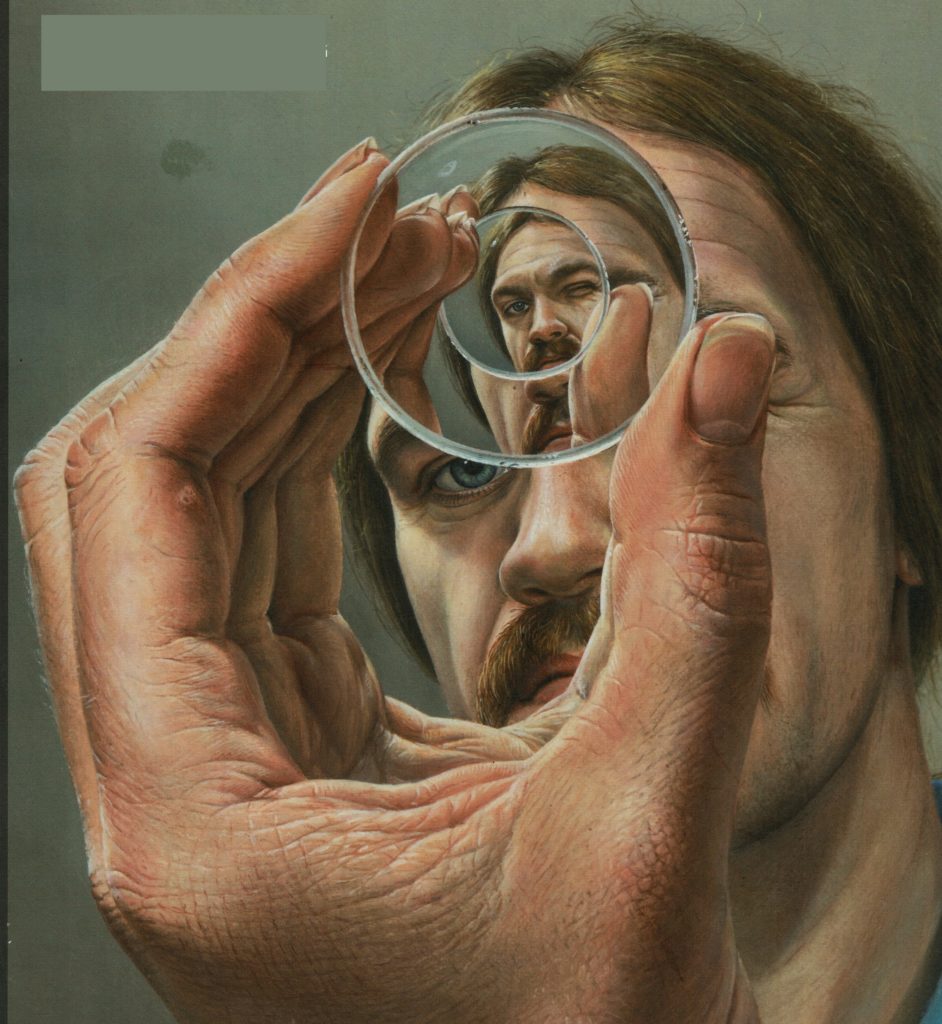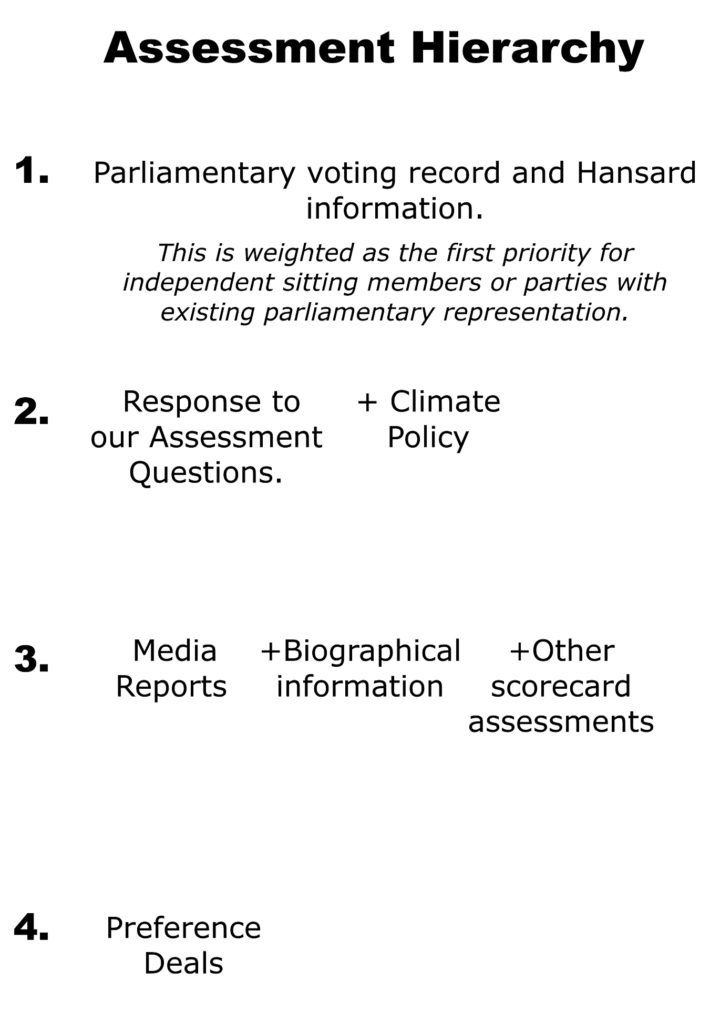Climate Lens Traffic Light Assessment

In November 2021 we used the Traffic Light Voting System successfully in Macedon Ranges local government elections to elect councillors willing to act on climate change. At the recent Federal, Victorian and NSW elections we used the same system to help Australians make their vote really count for climate.
Your vote for climate will encourage all politicians, regardless of party affiliation to take urgent action on the climate and ecological emergency.
Our Traffic Light Voting Guides aim to help voters improve the way democracy works. As part of our pursuit of action on climate, Vote Climate One strongly supports progressive minor parties and independents. The recent rise of community independents and the corresponding demise of support for the two major parties is a hopeful sign. The influence and wisdom of these independent representatives has the capacity to transform our democracy. Perhaps our political parties can be inspired to rid themselves of the insidious influence of lobbyist donors. Consequently the focus of their undivided attention can turn to the implementation of solutions to the climate emergency to aid human survival (the one issue that really matters!) and the broad common good.
Our assessment in a nut shell.
We have categorised the political candidates/parties into three easy to understand groups
GREEN
Candidates with the best ecological and climate policies are designated with green lights. We advise you to preference them first on your ballot paper.
ORANGE
Where candidates’ policies, preferences, or party positions on climate are questionable; we have marked them with orange lights. Number them after green light candidates.
RED
Our assessment process identified these candidates, or their party affiliation, as a very dangerous choice if we want effective action on global warming. We have given these candidates red lights and advise you to number them last on your ballot paper.

How are the candidates standing assessed?
2050 is happening today!
“Chances are that the month of July will be the warmest ever, and with it the hottest month ever … ‘ever’ meaning since the Eemian, which is indeed some 120,000 years ago.” Australia needs to play it’s role in the execution of a radical plan to deal with pent up heat and melting ice while we urgently reduce missions to pre-industrial levels (280 ppm CO2). Science is telling us, though, that radical measures will not just be necessary to reduce emissions. On March 15th seawater temperatures spiked and thermohaline circulation may have stopped. We have reached a dangerous tipping point which may catapult us towards a hothouse hell. While we reduce emissions, radical steps will very likely need to be taken to cool the planet.

Our panel will assess each independent candidate/party against their response to these foundational questions:
QUESTIONS TO FOCUS OUR CLIMATE LENS
- As a community leader are you committed to leading the way through the most tumultuous societal changes our population has ever experienced? Are you prepared to lead the way as we urgently try to protect our very survival?
- Do you endorse a national declaration of an ecological and climate emergency?
- Do you support the principle of aiming for zero emissions by 2030?
- Do you oppose exploring for or commissioning new gas or coal mining projects.
- Do you oppose the logging and wood chipping of native forests? Protecting forests is central to action on climate change.
- Climate change and solutions to the crisis are impacting some sections of society more than others. Do you support rapid transition action that prioritises social justice within the most cost effective framework our society can muster? Undeniably, our urgent task is to reduce the drivers and impacts of the emergency.
- Peaceful protest has always been enshrined in our democratic culture. Do you support the rescinding of legislation which undermines that right?
Assessment…the longer story.
Our assessment process is exhaustive and audacious. We have nuanced the three types of evaluation (green, orange, and red) to take full account of our many-sided approach. It weighs in on broader criteria rather than just a set of questions on climate policy. Parliamentary performance and preference deals are two such criteria which often indicate intentions better than the many rosy promises which are dished up during an election campaign. We think this practical focus makes our voting advice deliver the best outcome for action on climate. Sometimes this may appear to be paradoxical; especially when we allocate a major party different coloured Traffic Lights in different seats or voting situations.
Our aim is to avoid the trap of the perfect being an enemy of the good. Political candidates and parties do not have ideal policies and solutions to the crisis we all face. Sometimes it is a question of choosing the best of a rather ordinary bunch. Our rankings of different parties may vary in different contexts. In our evaluation for instance, the cynical use of preference deals could override the positives of a half decent climate policy.
The Lower Houses (Legislative Assemblies)
In the Australian political system, one of two major parties will form the government. In a two party preferred system of election, voters, in turn, need to preference one before the other. In recent elections in relation to climate action or policy, it has been a matter of settling for the least worse choice. The Labor Party is currently committed to supporting new gas and coal projects, for instance. The Liberals, though, are just as bad. Our guides attempt to give advice which will deliver the best outcome for climate action from what is currently on offer. Bill Hall from our Climate Sentenal News has uncovered an insidious red back spiders web within the NSW Liberal party which will surely undermine any future decisions the Liberals make for urgent climate action.
Candidates who are standing for a political party are assessed by their party’s policy and, if they have elected representatives in the last parliament, by their performance in parliament. Candidates’ personal views on climate action may be more progressive than their party’s but because party members are disciplined to vote as a block; members of a party will normally all be ranked with the same colour.
The commitment to climate action by single issue parties like Animal Justice Party, have been, in the past, difficult to assess. In a crucial parliamentary vote they may be vulnerable to deal making which would promise support for their single issue but at the cost of action on climate. We will continue to review their Traffic Light assessment and provide our findings in the political parties information.
In Lower Houses we have created two extra electorate categories to assess party candidates.
- Seats held by a progressive minor party or independent. Our strategy to maximise climate action in these seats is to not favour either major party; both major parties ranked with an Orange light. Vote for the Green Light candidates before you number the orange light party candidates. The Orange Light is to encourage the traditional Liberal or Labor voters to, at the very least, preference Green Light candidates immediately after their first preference.
- Labor and Liberal held seats being challenged by progressive minor parties or progressive independents like “Voices” candidates. Our strategy, once again, to maximise climate action in these seats is to not favour either major party so both are ranked as Orange. Similarly, the Orange Light is to encourage the traditional Liberal or Labor voters to preference Green Light candidates before their preferred major party candidate.
Climate Score Cards
Many other groups like our friends Vote Earth Now who are comprehensively examining climate policies and producing score cards. We will use this information to inform our traffic light allocation beyond all the other criteria.
Parliamentary performance
Parties and sitting members will be assessed on their historic contribution to action on global warming in our parliaments.
Preference deals
Allocation of a candidate or party’s preference will also inform our decision. This criteria is particularly relevant to late nominations, paper candidates and single issue parties. Candidates who nominate late can be difficult for us to assess thoroughly. If rushed assessments are problematic they may end up with a red light.
Traffic Light assessment of Labor, Liberal and the Coalition (using the NSW State election as an example).
There is persuasive evidence from the last NSW state parliament that both major parties have been laggards in regard to action on the climate emergency. Both parties support new coal and gas. Both parties appose a NSW state declaration of a climate emergency.
The Liberals and the Coalition have been leaders, compared to other states, on setting carbon emissions reduction. At the same time, though, they are responsible the disastrous climate and ecological consequences of a 300% increase in the expansion of land clearing. Our uncovering in Climate Sentinel News of the red back spider’s web which entangles the current NSW premier suggests that the best days for Liberal party climate action have passed with this change in leadership.
Both major parties support the new anti protest laws which severely undermine our democratic tradition of peaceful protest.
Violet Coco was sentenced to 8 months (minimum) jail time for blocking a one-lane on-ramp to the harbor bridge for 28 minutes to bring attention to the climate emergency. The production team of the Fall Guy film was given $30 million from the Federal Government, topped up by $14.5 million from the State Government to block ALL traffic (except trains) crossing the Bridge, and the Cahill expressway for 7 hours. This was instituted by the Liberal Government, Labor’s Chris Minns has also supported the prosecution.
Vote Climate One has not so far been convinced by evidence that we can rank one of the majors ahead of the other. Given that they are better on climate than the worst of the worst like One Nation or the Christian Democrats, we have ranked Labor and the Liberals as orange. We urge Labor and Liberal voters to vote for Green Light candidates before the majors. If this occurs there could be a breakthrough in political will for climate action via a minority NSW state government.
The Climate Lens Concept
The two way focus of our Climate Lens Assessment on the existential threat of the anthropocene, probes both inwards, and outwards.
Peering inwards through the Climate Lens highlights our personal responsibility (The voter) while looking outward shines a spotlight on the adequacy of our collective moral responsibility (parties, candidates and legislative performance in government). The undeniable task of the climate lens is to prioritise the protection of everything we hold dear. The hubris of our species needs a dose of the reduction perspective tranquilizer encapsulated in this painting by Peter Trusler.

Got Questions?
Contact the Vote Climate One Team
(If you would prefer to speak with a human please call: 0427 580803